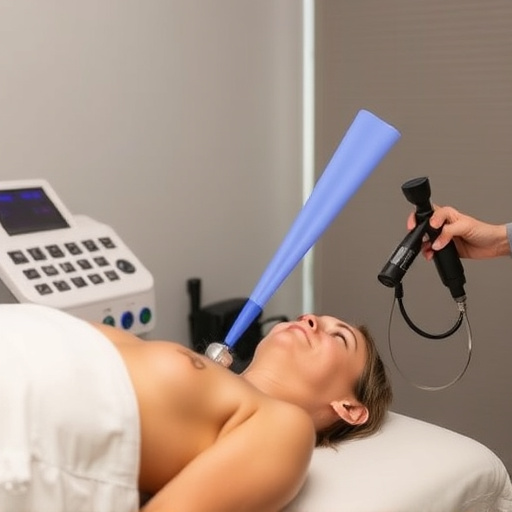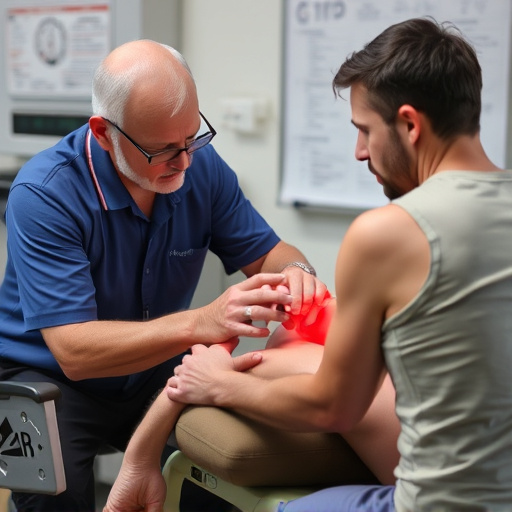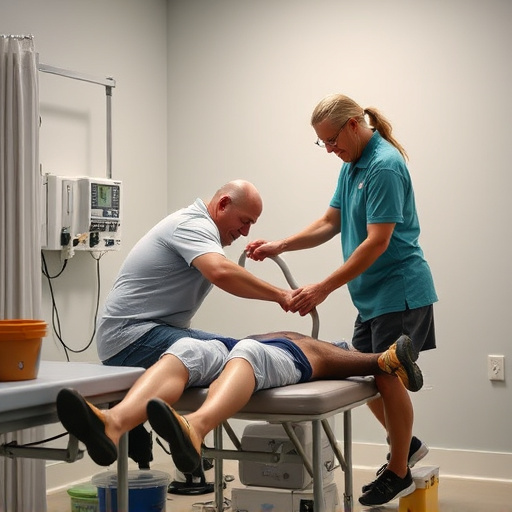Shockwave therapy for pain is a non-invasive, high-energy sound wave treatment gaining popularity for back pain relief and accelerated muscle recovery. Safe and effective with minimal side effects, it avoids surgical risks. Targeted shockwaves stimulate natural healing mechanisms for conditions like chronic tendonitis, fasciitis, and muscle strains. Cost considerations include equipment, overheads, labor, and regional economies, impacting insurance coverage and pricing strategies. Patients should confirm insurance coverage and understand reimbursement rates before starting treatment.
“Unraveling the financial aspects of shockwave therapy for pain management offers a promising avenue for those seeking alternative treatment options. This article delves into the intricate cost breakdown of shockwave sessions, providing a comprehensive guide for patients and healthcare providers. We explore the fundamental concepts of shockwave therapy, dissect the various cost components, and analyze affordability strategies. By understanding the financial landscape, individuals can navigate shockwave therapy with greater clarity, making informed decisions regarding their pain relief journey.”
- Understanding Shockwave Therapy for Pain: The Basics
- Factor Analysis of Cost Components in Shockwave Therapy Sessions
- Exploring Affordability and Reimbursement Options for Patients
Understanding Shockwave Therapy for Pain: The Basics

Shockwave therapy for pain has emerged as a non-invasive treatment option gaining popularity for its potential to offer back pain relief and accelerate muscle recovery. This innovative procedure uses high-energy sound waves, known as shockwaves, to penetrate deep into damaged soft tissues. The shockwaves stimulate a natural healing process in the body, promoting tissue regeneration and reducing pain associated with various conditions such as chronic tendonitis, fasciitis, and certain types of muscle strains.
Compared to other interventions, shockwave therapy is considered a safe and effective solution with minimal side effects. It offers a non-invasive approach that avoids the risks associated with surgery or injections. During a typical session, a specialized device delivers targeted shockwaves to the affected area, encouraging the body’s inherent healing mechanisms. Multiple sessions are usually required for optimal results, providing patients with a promising alternative for managing pain and restoring mobility without the need for extensive downtime or invasive procedures.
Factor Analysis of Cost Components in Shockwave Therapy Sessions

When breaking down the cost of shockwave therapy for pain sessions, it’s crucial to understand that several factors contribute to the overall expense. These include equipment acquisition and maintenance, facility overheads, therapist labor rates, and sometimes, medication or numbing agents used during the procedure. Each component plays a unique role in the treatment process and can vary widely depending on regional economies, clinic policies, and patient needs.
The cost analysis should also consider the diverse nature of shockwave therapy applications. Whether it’s for injury rehabilitation, managing chronic conditions, or providing headache relief, the pricing strategies and insurance coverage may differ. Physical therapy clinics often incorporate shockwave therapy as part of a comprehensive treatment plan, factoring in additional costs associated with extended sessions, frequent treatments, and patient monitoring to ensure optimal results.
Exploring Affordability and Reimbursement Options for Patients

For patients considering shockwave therapy for pain sessions, exploring affordability and reimbursement options is a crucial step. Many health insurance plans now cover certain types of shockwave therapy, recognizing its potential for mobility improvement and chronic pain relief, including sciatica relief. Patients are encouraged to reach out to their insurance providers directly to confirm coverage, as policies can vary significantly.
Reimbursement rates for shockwave therapy sessions differ based on location, the specific treatment protocol, and individual insurer policies. Some patients may find it helpful to consult with their healthcare provider or seek guidance from certified shockwave therapy clinics. These resources can offer insights into potential out-of-pocket expenses and financial assistance options, ensuring a more transparent understanding of the cost breakdown before embarking on the treatment journey.
Shockwave therapy for pain presents a promising, non-invasive approach to managing chronic conditions. Understanding the cost breakdown of these sessions is crucial for patients and healthcare providers alike. By factoring in various expenses, from equipment and facilities to professional time, we can gain insights into the affordability of shockwave therapy. Exploring reimbursement options further enhances accessibility, ensuring that those who stand to benefit most are able to receive this treatment. As the field advances, continued research into cost-effectiveness will be vital to making shockwave therapy for pain a viable and accessible solution for many.














